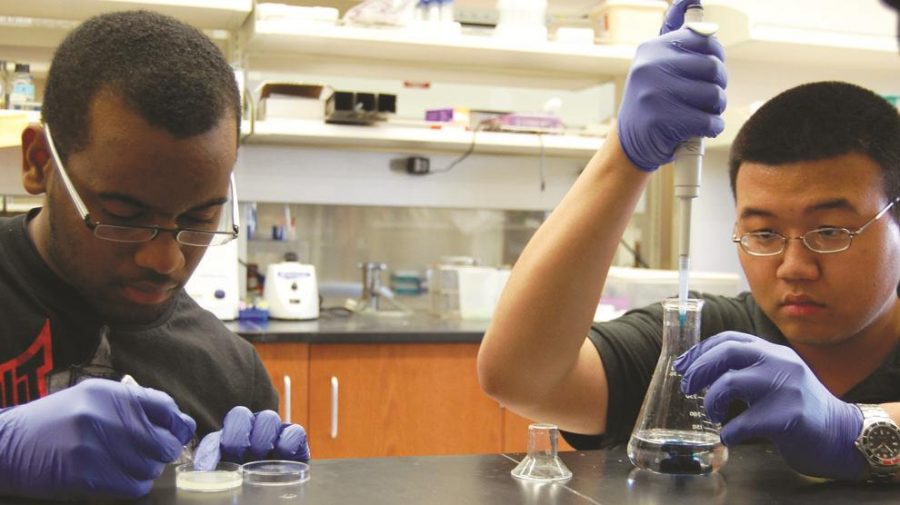While many students opt to spend their time outside of the classroom playing intramural sports or socializing with friends, a select few choose to spend their days conducting biomedical research in the Worm Shack.
The Worm Shack, named for the c. elegans worm commonly used in testing, studies the genetics of degenerative nervous system disorders such as Parkinson’s, Alzheimer’s, epilepsy and dystonia—a disease that causes skeletal muscles to involuntarily contract and spasm. Fifteen undergraduate students perform innovative research in the Shack and receive the opportunity to make a significant difference in the worldwide medical sphere.
Guy Caldwell, associate professor of biological sciences, and his wife, Kim, assistant professor of biological sciences, head the research team.
“Our students have been major contributors to several papers published in internationally recognized scientific journals and have presented their research at major conferences,” Guy Caldwell said. “In addition to playing a role in the drug discovery process, their work has included identifying new therapeutic targets and genetic factors linked to Parkinson’s disease.”
Caldwell also said the Michael J. Fox Foundation selected the students’ work for further funding.
Guy and Kim Caldwell and their team of “shackers” discovered an antibiotic to help treat dystonia in 2005. This common derivative of penicillin, known as ampicillin, proved effective during testing in restoring defective human cells and reversing a mouse model of dystonia. However, this antibiotic may not be practical for everyday use.
“Because ampicillin is an antibiotic, it is not good for chronic dosage as would be required for a movement disorder like dystonia,” Guy Caldwell said. “Long-term antibiotic usage can lead to dangerous super-infections and even death.”
The Worm Shack staff plans to continue preliminary studies in order to discover other small molecules that do not contain the antibiotic factor, yet perform the same protective function as ampicillin.
Students majoring in scientific fields can perform hands-on research in The Worm Shack beginning their freshman year.
“It is so helpful to have the Caldwells and graduate students as mentors to teach you how to do real scientific research and guide you through the process of becoming a scientist,” said John Ricketts, a senior majoring in biology.
Ricketts has been working with the Caldwells since 2006, and his most significant project to date has been discovering the cellular role of the protein TorsinA. This protein is mutated in individuals who are diagnosed with the most common form of dystonia.
Zach Haney, a junior majoring in physical education, has been afflicted with dystonia since an early age. He described the struggle for social acceptance he once faced and how he turned to playing wheelchair basketball as an outlet for his competitive nature.
“When I was younger, the sport helped me to identify with my peers who would talk about what they did at peewee football or soccer practice,” he said. “I was able to throw in my two cents about what I did at basketball practice.”
Haney said he’s enthusiastic about the dystonia research the Worm Shack is performing.
“I think it’s great that people are taking an active interest in helping other people, and I am excited that the Caldwells even chose dystonia for their research,” Haney said. Though the research may have come too late to alleviate Haney’s affliction, he said it would be “absolutely outstanding” if the research benefited younger generations.
Nathan Roberts, a sophomore majoring in chemistry and biology, is working to expand on Ricketts’ discovery.
“We have compiled a list of genes which alter levels of endoplasmic reticulum stress, meaning that they are interacting with TorsinA,” Roberts said. “We have actually been able to narrow our search down to a single well-known developmental pathway.”







